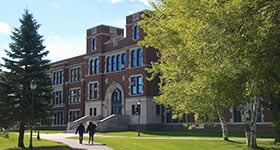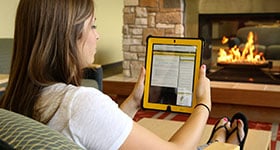The onset of the COVID-19 pandemic sent shockwaves across the global community. Perhaps no aspect of society has been affected more than the world of education. Students and teachers alike were forced to adapt to new instructional methods, adhere to enhanced safety precautions and master new technology in a condensed time frame.
These unique challenges, which necessitated modifications to the traditional classroom environment, reinforced the need for educators who can adapt in the face of adversity. Programs like the online Master of Science in Education – Instruction (MSEI) at the University of Wisconsin-Superior (UWS) are an excellent option for teachers who want to help their students succeed no matter how unexpected the circumstances.
Here are some methods teachers should keep in mind as they adapt their classrooms to the COVID-19 era.
Reopening Plans Should Include Community Members
One of the biggest challenges for educators and administrators has been determining the safest possible way to re-open schools. According to the Center for Disease Control and Prevention (CDC), “school nurses, teachers, staff, parents, student leaders, and other community stakeholders (e.g., youth service organizations, health centers, etc.)” should develop the Emergency Operations Plans (EOP). Suggestions for the EOP include:
- Monitor local COVID-19 statistics.
- Create a system for sharing information between schools, parents and community stakeholders.
- Work with local government officials to establish a protocol for resuming or halting in-person instruction.
- Educate students, staff and parents on behaviors that can slow or stop the spread of COVID-19.
Make the Classroom a Safe Space
Once schools have reopened, teachers must be diligent in following established protocols for in-person instruction. This may seem like a massive challenge, but staying informed on the latest guidelines and maintaining open communication with administrators could potentially prevent classroom outbreaks.
- Maintain adequate physical distancing between students.
- Instruct students on how to properly wash their hands.
- Teach students how to wear, handle and store masks correctly.
- Sanitize the classroom regularly.
Adapting to the COVID-19 Classroom
What exactly does the COVID-19 classroom look like? In short, there is no standard, across-the-board answer. Teachers have had to creatively adapt to safety standards to protect both themselves and their students. Some teachers have turned their basements into makeshift production studios from which they broadcast their virtual lessons. Others use outdoor spaces to offer safe instruction when their physical classrooms do not allow for social distancing. Educators who work with younger children, such as special education teacher Jennifer Graves, have worried how students will respond to her personal protection equipment (PPE).
“It would break my heart if one of my students was afraid of me because of the PPE, but I know that it is the best way for me to stay safe in my classroom,” she said.
The budgetary differences across communities and school districts mean that every teacher faces their own unique challenges establishing some semblance of normalcy in a pandemic world. An advanced degree in education can help any teacher be better prepared to adapt to classroom changes.
New Technology and Routines
Perhaps the biggest hurdle presented by COVID-19 is the adjustment to new technologies and day-to-day routines. With face-to-face instruction limited, or suspended altogether, teachers have had to practice new modes of instruction, and students have had to adjust the way they learn.
Traditional instruction methods have been replaced by flipped classrooms, asynchronous and synchronous learning platforms, Zoom conferences, eLearning and virtual tutoring. Quickly pivoting to technology-based learning requires teachers with a solid understanding of educational fundamentals and the ability to research and incorporate current educational trends. For example, the UWS MSEI program helps students gain knowledge and develop skills through courses such as the following:
- TED 734: Current Developments in Student Learning and Their Applications
- TED 744: Trends in Curricular and Instructional Practices
- TED 750: Research Foundations of Education
There is no easy way to navigate life in a global pandemic. It takes determination, creativity and the ability to adapt. For teachers to be successful in the classroom under such challenging circumstances, they’ll need transformative advanced degrees in education to equip them for the unprecedented.
Learn more about the University of Wisconsin-Superior online Master of Science in Education – Instruction program.


